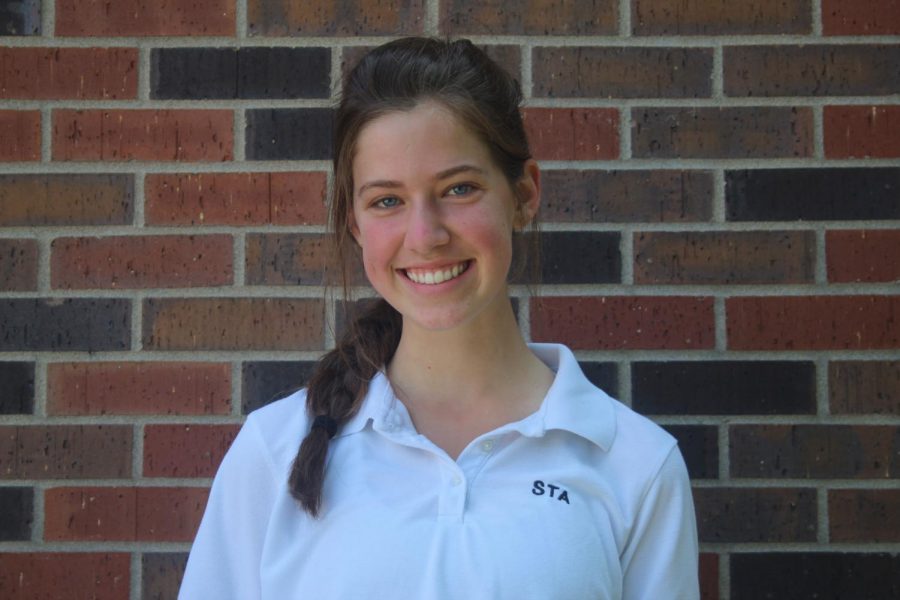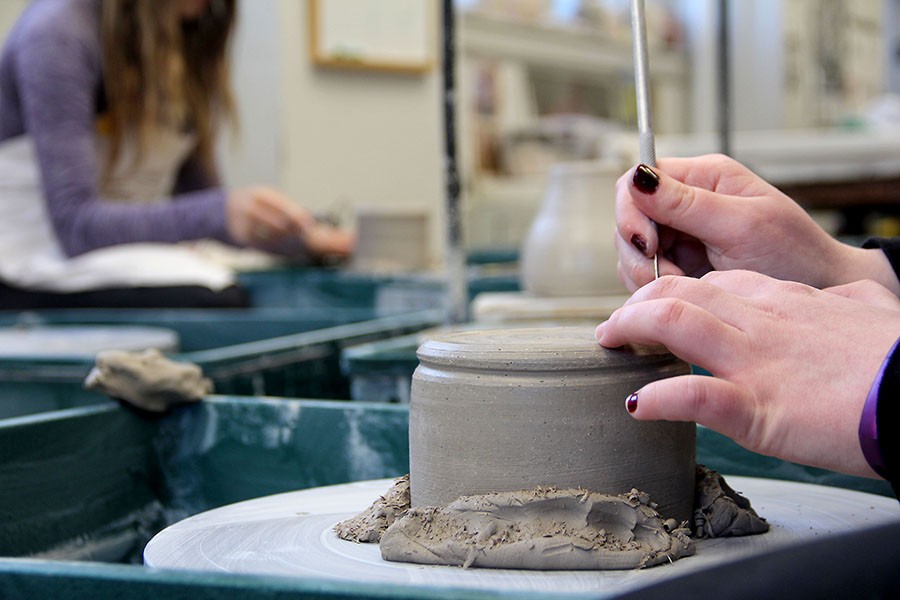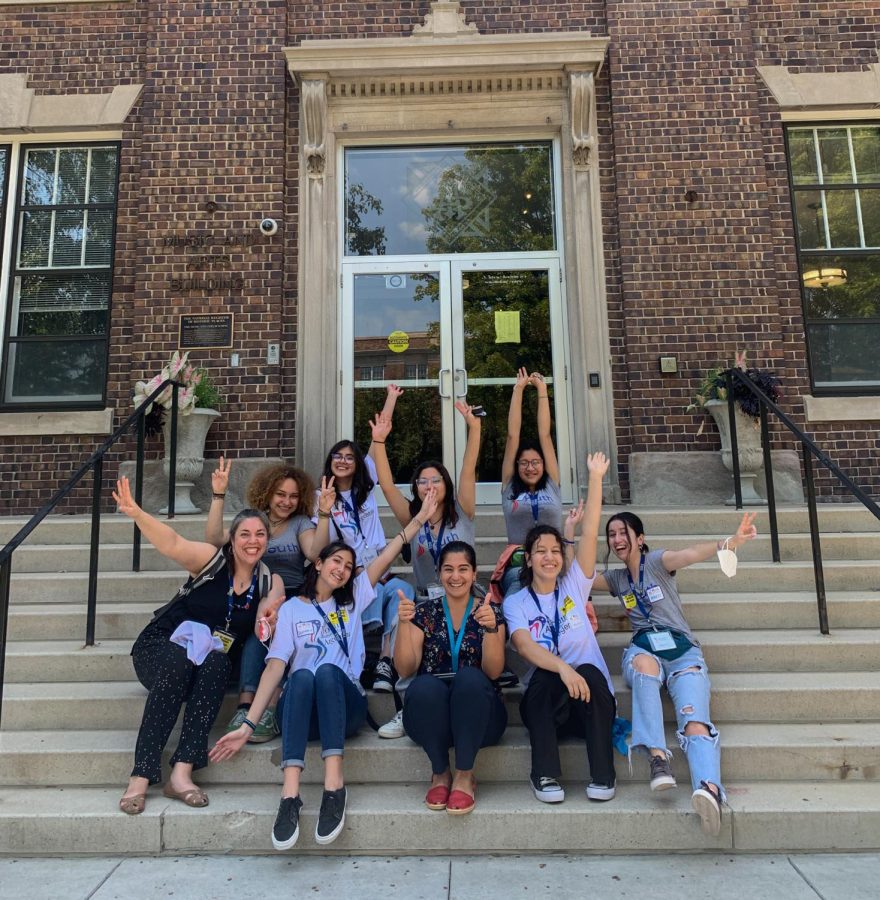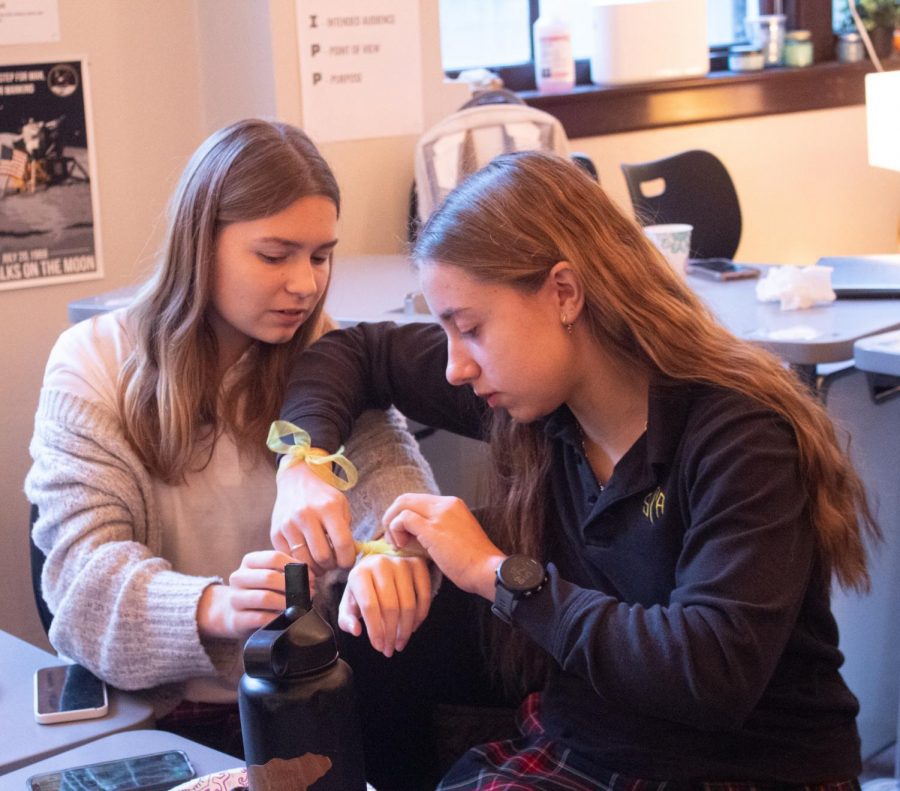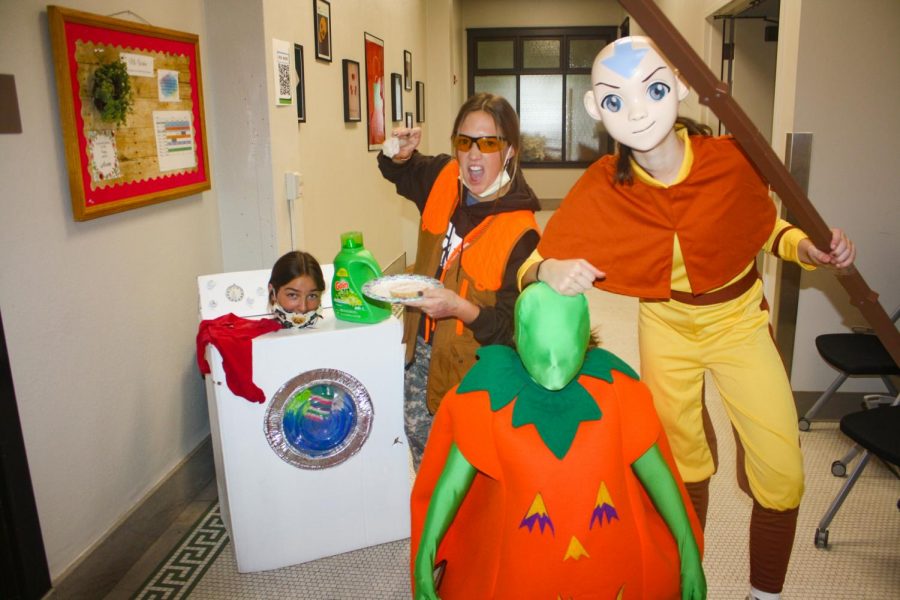story by Hannah Bredar, photos by Grace Hodes
At the beginning of the school year a handful of STA science and English teachers started using a new teaching technique known as the flipped classroom. This method involves students taking notes on video lectures and doing homework and labs in class when the teacher is available to help the students. Teachers that are trying this method include science teachers Renee Blake, Mary Montag, Amy Carlson, Mary Rietbrock and Terry Connor and English teacher Carrie Jacquin. After the first semester some teachers that use this technique are making minor changes to enhance the learning experience even more. For example, Ms. Renee Blake is having her students put their notes in specific spirals along with the notes they take from the book.
“I’m finding I am able to get more material in, more in depth and the [student’s] scores have increased [while using this method],” Blake said.
When interviewed earlier this year, junior Sabrina Salerno had a positive view outlook on the new flipped classroom method. Since first semester, Salerno’s views about the method have not changed.
“[The flipped classroom method] is a lot easier,” Salerno said. “I like it because I don’t have to sit through boring lectures in class.”
[nggallery id=429]
However, freshman Haley Burgess, whose biology class uses the flipped classroom method, has changed her views since first semester. Burgess explained that although she originally favored the new method, she now has mixed feelings.
“I feel like I learn better with the flipped classroom technique because I have more time for the material to sink in,” Burgess said. “But I still don’t like the technique because it takes a long time to watch the videos.”
Even though the video lectures that are assigned to watch at home may be boring, Blake finds this method very beneficial to students.
“[Students] can work ahead,” Blake said. “And if a student is sick then they can look at the lectures instead of getting notes from a classmate and not understanding them.
According to the two chemistry teachers in Colorado that created this method, this technique is beneficial to any subject because teachers can avoid spending one or two class periods explaining a topic. This method also requires a lot of work from the teacher’s end. Teachers must have everything ready to go for the unit before they even start it. This includes having all the video lectures recorded and posted for students to view, all the worksheets ready, and having all the quizzes prepared.
“It is harder to teach this way because you have to have everything lined up ahead of time,” Blake said. “You have to have all the video lectures done, and [for] some of the videos it takes an hour to an hour and a half to upload to YouTube.”




